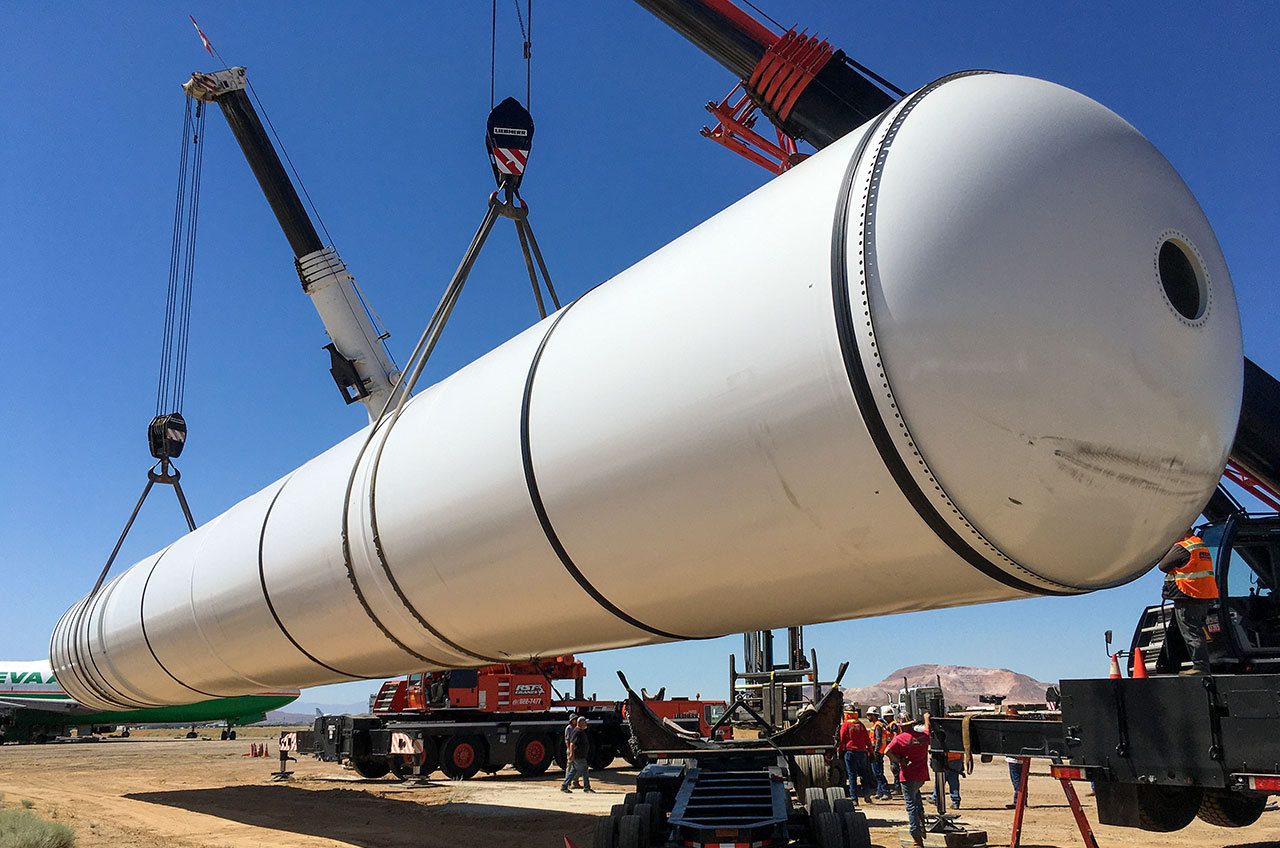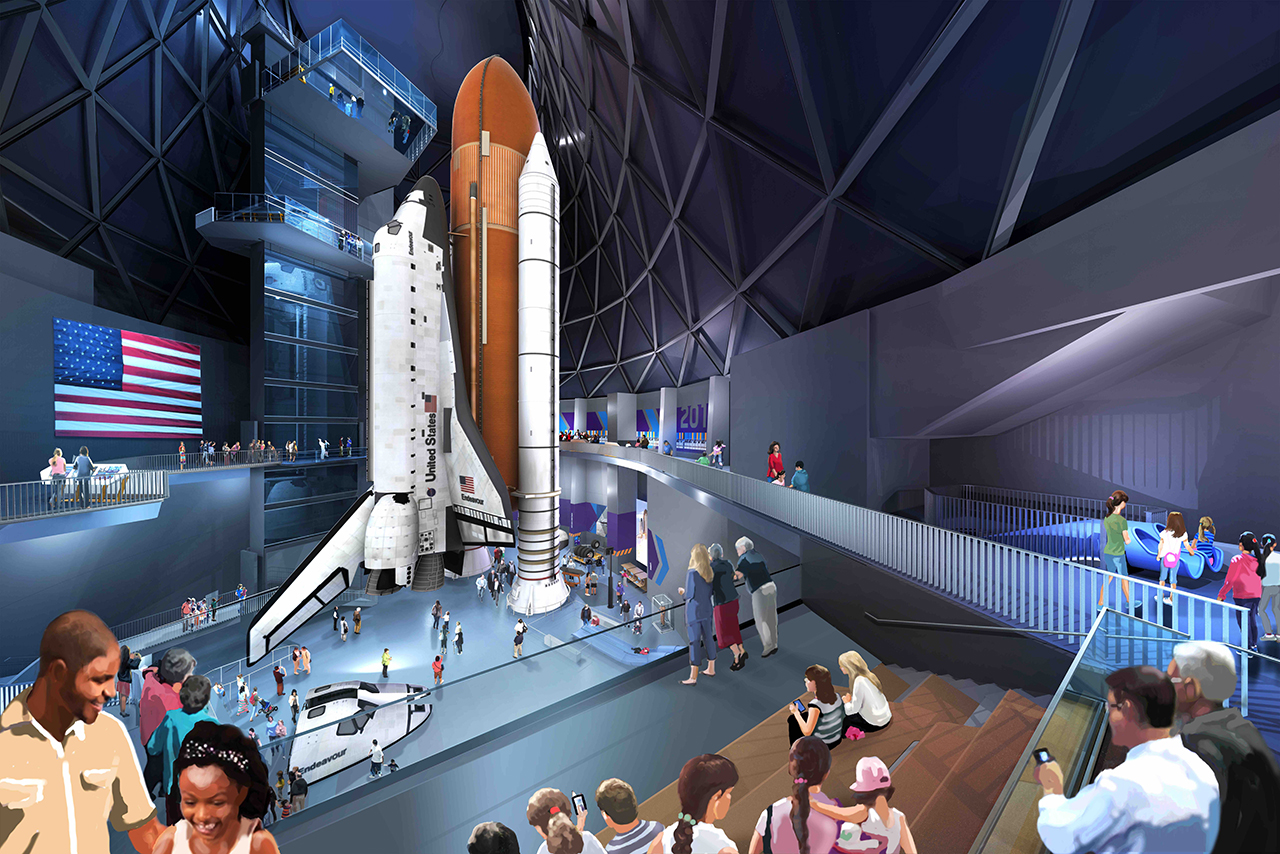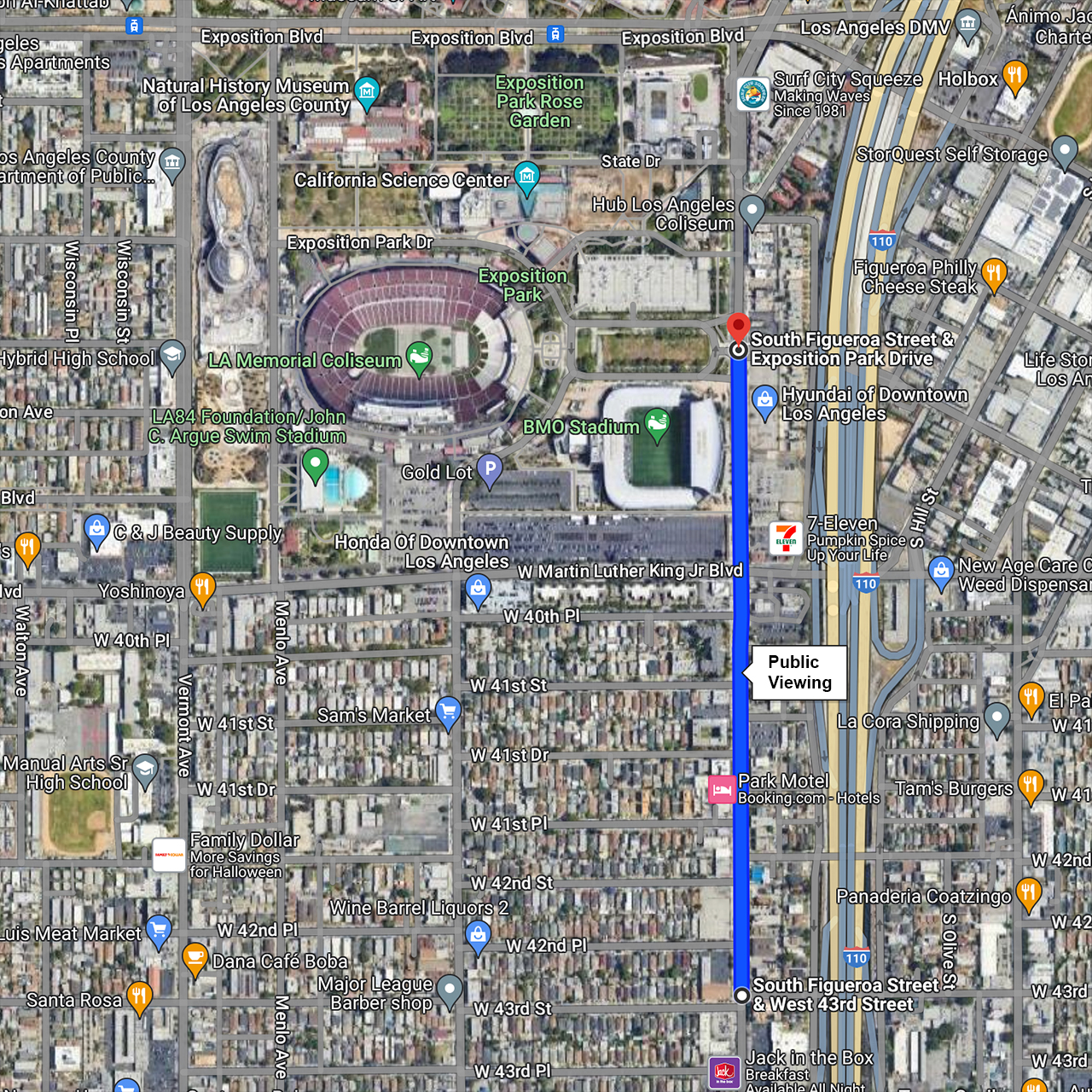Public invited to watch solid rocket motors arrive for shuttle Endeavour exhibit in L.A.
The public may gather on Oct. 11 along Figueroa Street from 43rd Place to 39th Street to join in the celebration.

The California Science Center is celebrating the anniversary of space shuttle Endeavour's iconic Los Angeles road trip with the delivery of two very large candles.
On Wednesday (Oct. 11), 11 years to the day after the NASA winged orbiter began the ground-based leg of its journey to go on display, two flight-worthy solid rocket motors (SRMs) will arrive at the science center to stand with Endeavour in a vertical, ready for launch configuration. The public is invited to watch as the pair of 116-foot-long (35 meters) motors are carried by truck to Exposition Park.
"Eleven years after Endeavour's memorable crosstown journey, we're delighted to invite the public to join us once again to be a part of this next historic arrival," said Jeffrey Rudolph, president and chief executive officer of the California Science Center, in a statement. "The arrival of the SRMs will propel us one step closer to the completion of the future Samuel Oschin Air and Space Center, which will serve as a launchpad for creativity and innovation and will inspire future generations of scientists, engineers and explorers."
The SRMs comprise the largest part of the solid rocket boosters (SRBs). During the 30-year space shuttle program, twin 15-story-tall, reusable SRBs would fire in tandem with the shuttle's three main engines to produce more than six million pounds of thrust, the majority of what was needed to lift off the launch pad. After burnout, the two boosters were jettisoned and descended under parachutes to an ocean splashdown to be recovered, refurbished and reused.
Related: NASA's space shuttle program in pictures: A tribute

Donated by Northrop Grumman, the two SRMs include hardware that was part of 81 space shuttle missions. The oldest cases, located at the top of each assembled solid rocket motor, helped launch STS-5, the fifth flight of the program and the orbiter Columbia, in 1982. The most recent use was for STS-123, the 21st launch of Endeavour, in 2008.
The SRMs have been in storage at the Mojave Air and Space Port, about 100 miles (160 kilometers) north of Los Angeles, since September 2020. They are the final elements of space shuttle Endeavour's stack to arrive at the California Science Center. The components, including NASA's last remaining built-for-flight external tank, will make up the world's only exhibit of an authentic shuttle poised for flight.
The SRMs' route to the science center will be mostly by freeway until the last leg of their trip. After exiting the California Freeway (Route 110) the morning of Oct. 11, the motors will travel on flatbed trucks northbound along Figueroa Street beginning at 7:30 a.m. PDT (10:30 a.m. EDT or 1430 GMT) from 43rd Place to Martin Luther King, Jr. Boulevard. At 8:00 a.m. PDT (11:00 a.m. EDT or 1500 GMT), the SRMs will pause at Martin Luther King, Jr. Boulevard before a ceremonial "finish line" at 39th Street 45 minutes later.
The public may gather along Figueroa Street from 43rd Place to 39th Street to join in the celebration and watch the SRMs arrive until 9:00 a.m. local time. This will be the best opportunity for the public to see any stage of the "Go for Stack" process in person, due to safety precautions and space constraints around the Samuel Oschin Air and Space Center construction site.
Related: Where are NASA's space shuttles now?

"We want to express our immense gratitude to the City of Los Angeles staff and leadership, who have worked to ensure we have the best possible plan to safely deliver the SRMs to the California Science Center," said Rudolph.
The California Science Center will open an hour early at 9:00 a.m. on Oct. 11 as part of the SRM arrival celebration. Guests may view the space shuttle Endeavour in the Samuel Oschin Display Pavilion, as well as flown capsules from NASA's Mercury, Gemini and Apollo programs. Experts in aerospace subjects will be on hand to answer visitors' questions and lead educational demonstrations.
The roughly six-month process to stand up the space shuttle Endeavour began in July with the installation of the solid rocket booster aft skirts. Next the SRMs and their forward assemblies will be stacked to form the SRBs. This will be followed by the move and lift of the external tank, ET-94, and then Endeavour will make its final move across Exposition Park to be lifted by cranes and mated with its already standing components.
Once finished, the complete space shuttle stack will be in its vertical configuration, towering 200 feet tall (60 m).
The Samuel Oschin Air and Space Center building will then be completed around the full stack before receiving more than 100 other aviation and aerospace exhibits. The California Science Center Foundation is actively working to complete this ambitious project, with $50 million still needed to raise to meet its $400 million goal.
The public has until the last day of the year (Dec. 31) to see Endeavour for several years, until the Samuel Oschin Air and Space Center opens to the public.
Follow collectSPACE.com on Facebook and on Twitter at @collectSPACE. Copyright 2023 collectSPACE.com. All rights reserved.
Get the Space.com Newsletter
Breaking space news, the latest updates on rocket launches, skywatching events and more!
Join our Space Forums to keep talking space on the latest missions, night sky and more! And if you have a news tip, correction or comment, let us know at: community@space.com.

Robert Pearlman is a space historian, journalist and the founder and editor of collectSPACE.com, a daily news publication and community devoted to space history with a particular focus on how and where space exploration intersects with pop culture. Pearlman is also a contributing writer for Space.com and co-author of "Space Stations: The Art, Science, and Reality of Working in Space” published by Smithsonian Books in 2018.In 2009, he was inducted into the U.S. Space Camp Hall of Fame in Huntsville, Alabama. In 2021, he was honored by the American Astronautical Society with the Ordway Award for Sustained Excellence in Spaceflight History. In 2023, the National Space Club Florida Committee recognized Pearlman with the Kolcum News and Communications Award for excellence in telling the space story along the Space Coast and throughout the world.










